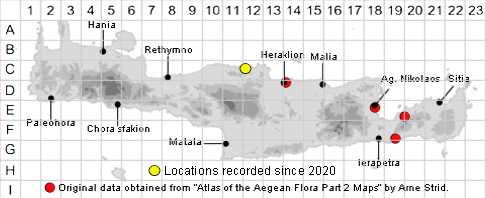
SPECIES DESCRIPTION
ATRIPLEX DAVISII
Family and Genus:- See- AMARANTHACEAE/A. prostrata group
Common Name:- None
Homotypic Synonyms:- Obione davisii.
Meaning:- Atriplex (L) A name used by the Roman naturalist and philosopher
Pliny, from the ancient Greek meaning black and intertwined.
Davisii (L) For Peter Davis, collector for Veitch in Peru c. 1875.
General description:- Prostrate-spreading to erect, much-branched annual.
Stems:-
1) Up to 100 cm, angular or ridged, with long internodes.
Leaves:-
1) Rather thick, opposite or alternate,
a) lower, 3-10 cm, triangular, truncate ± at the base greyish-green, glabrous or
farinose.
d) upper, oblong to narrowly lanceolate, entire.
Flowers:-
1) Inflorescence, with long leafless branches.
2) Bracteoles, small, united to above the middle and tightly enclosing the fruit, with
2 small, roundish appendages, triangular to triangular-ovate, dentate, sometimes
cuneate at the base.
Fruit:-
1) Seed, vertical, lenticular 2 mm. diam., dark brown to black, shiny.
Key features:-
1) Whole plant greyish-green.
2) Bracteoles, united to above the middle.
Habitat:- Mainly a weed of gardens and ruderal habitats in coastal areas,
occasionally inland to 500 m
Distribution:- Limited distribution in the Aegean region, perhaps more widespread,
but not always distinguished from A.patula or A. prostata Scattered in Anatolia,
Syria, Palestine and W Iran. Rare on Crete known only from four locations in the
east.
Flowering time:- July-Nov.
Photos by:- An Other
